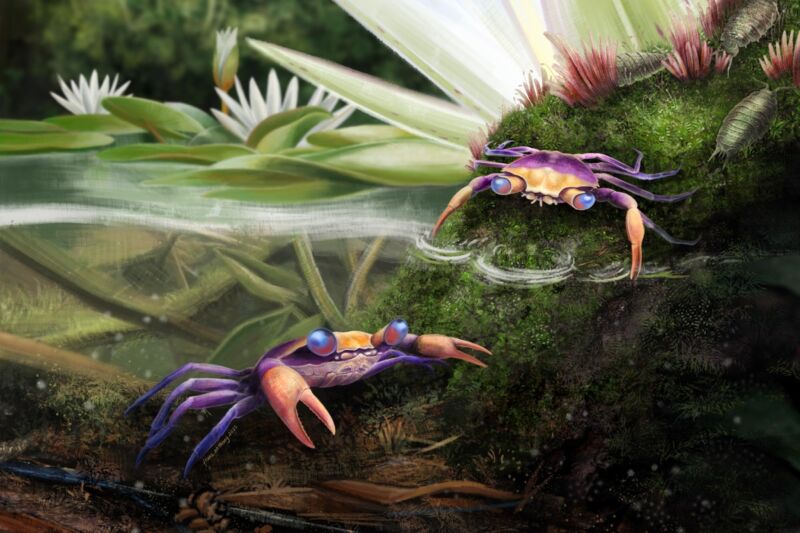A team of researchers discovered the first fully preserved Dinosaur-era crab. Here’s the full story on a missing piece of crab history.

New 100 million year old Dinosaur-era crab discovered
About 100 million years ago, in the crustacean period, a small crab moved from its aquatic habitat into the land. However, it got trapped in amber. At least that’s what the researchers who found it hypothesize. The discovery of the specimen is a surprise to the scientific community. This is because it is uncommon to find a water crab immortalized in tree resin. Additionally, previously found samples of similar crabs are incomplete. However, this specimen does not seem to miss even a single hair!
“The specimen is spectacular, it is one of a kind. It’s absolutely complete and is not missing a single hair on the body, which is remarkable,” stated Javier Luque, the lead author of the study. Luque is a postdoctoral researcher in Harvard University’s Department of Organismic and Evolutionary Biology. A new study revealed the discovery of a Dinosaur-era crab that is very similar to the modern-day crab. Published in Science Advances, the study describes a ‘true crab’ (or Brachyura) that was previously unknown. Cretapsara athanata is just five millimeters. Named after Apsara, a south Asian and southeast Asian spirit of the waters and clouds. It translates to immortal. It is a subtle reference to the frozen state it was found in.
More on the historic discovery
Additionally, the study is also historic since it pushes the time frame of when water crabs crawled to land by about 25 to 50 million years. It also provides new insights into the diversification of crabs, the cretaceous crab revolution. “The more we studied the fossil, the more we realized that this animal was very special in many ways. Now we were dealing with an animal that is likely not marine, but also not fully terrestrial. In the fossil record, nonmarine crabs evolved 50 million years ago, but this animal is twice that age,” added Luque.
“If we were to reconstruct the crab tree of life—putting together a genealogical family tree—and do some molecular DNA analysis, the prediction is that nonmarine crabs split from their marine ancestors more than 125 million years ago,” he added. However, bridging the gap between actual fossil records is tricky since usable specimens are much younger. but, the discovery of the new missing link bridges the gap of knowledge. Linda Xing from China University and her team took micro-CT scans of the fossil and made a 3D reconstruction.

The amber is a part of a collection from China’s Longyin Amber Museum. The study is an international collaboration between researchers from Harvard University, Yale University, The Smithsonian Tropical Research Institute, Yunnan University, University of Alberta, Royal Saskatchewan Museum, and the China University of Geosciences.
